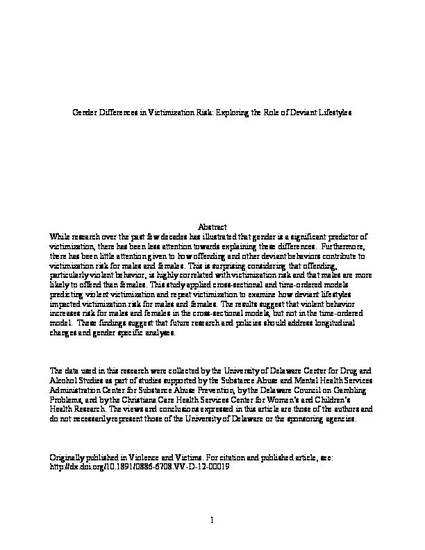
Article
Gender Differences in Victimization Risk: Exploring the Role of Deviant Lifestyles
Violence and Victims
(2013)
Abstract
While research over the past few decades has illustrated that gender is a significant predictor of victimization, there has been less attention towards explaining these differences. Furthermore, there has been little attention given to how offending and other deviant behaviors contribute to victimization risk for males and females. This is surprising considering that offending, particularly violent behavior, is highly correlated with victimization risk and that males are more likely to offend than females. This study applied cross-sectional and time-ordered models predicting violent victimization and repeat victimization to examine how deviant lifestyles impacted victimization risk for males and females. The results suggest that violent behavior increases risk for males and females in the cross-sectional models, but not in the time-ordered model. These findings suggest that future research and policies should address longitudinal changes and gender specific analyses.
Keywords
- Victimization,
- Gender,
- Deviance,
- Longitudinal
Disciplines
Publication Date
2013
DOI
10.1891/0886-6708.VV-D-12-00019
Citation Information
Zaykowski, Heather, and Whitney DeCamp. (2013). Gender Differences in Victimization Risk: Exploring the Role of Deviant Lifestyles. Violence and Victims, 28, 341-356. doi:10.1891/0886-6708.VV-D-12-00019
